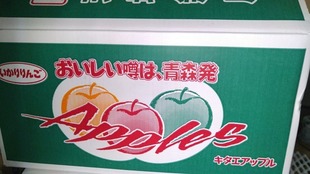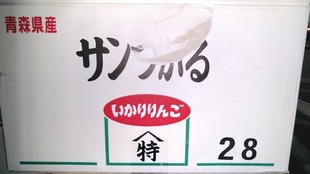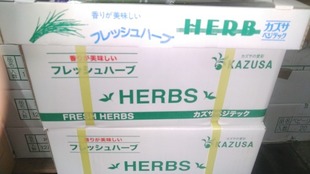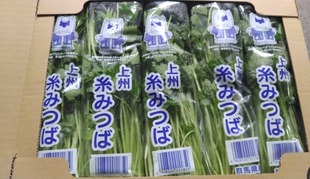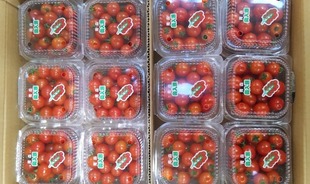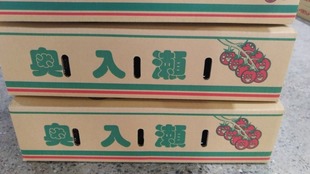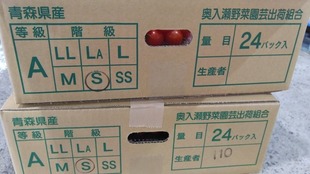In April 2022, a baked sweet potatoer vending machine appeared at Hirosaki City Hall. It seems that Fuji Motors (Sakaizeki, Hirosaki City), an automobile parts sales company in the city, planned it for the purpose of supporting the employment of people with disabilities and installed it on the 6th. The packaging and replenishment of baked sweet potatoes, which are rich in dietary fiber and good for excreting, are sweet and delicious. (Support for persons with disabilities, support for children with disabilities, welfare for the elderly, etc.)) In 1970, the “Basic Act for Persons with Disabilities” was enacted, which transcended the types of disabilities. In 1993, the revision of the law enacted the “Basic Law for Persons with Disabilities,” which is the basis of measures for persons with disabilities. It seems that it had a great influence on the way of the measures after that because it clearly defined the mental disorder and brought about the formulation of the plan for the disabled. The 2004 revision of the law stipulates that discrimination against persons with disabilities should not be made as a basic principle, and it is obligatory to formulate plans for persons with disabilities in prefectures and municipalities. The “support fee system” that came into effect in 2003 aims to provide user-oriented services by allowing users to select their own services and use them based on contracts with businesses. The “home support” service is being enhanced. The Ministry of Health, Labor and Welfare of Japan aims to realize a society in which anyone, regardless of disability, can find employment opportunities according to their abilities and aptitudes and lead an independent life in the community. It seems that people with disabilities who use the facilities of “Comprehensively promoting employment measures for a certain person” will do it. It seems that there are two types, HOT and COLD. I don’t know the varieties, so why don’t you contact me if you are in the vicinity or if you are interested? On April 6, 2022, in Hirosaki Park, Roto zakura (the place of origin is unknown. It is said that it was introduced when the Russo-Japanese War triumphed, or it came from China’s “Lu no Kuni(It refers to the southern part of Shandong Province, China, and seems to be used as an abbreviation for the entire Shandong Province. Lu as a prince was a country that existed in the Chinese continent during the Zhou, Spring and Autumn, and Warring States periods)”. It seems that it was planted in the Prefectural Nagano Library (currently Nagano City Nagano Library). It seems that it is popular as the earliest blooming cherry blossom in Nagano City); Amygdalus davidiana (Amygdalus persica or David) peach) seems to entertain the visitors by making the flowers bloom. It seems that the peach companion Amygdalus davidiana bloomed in the morning at the picnic square in the park. It was cheerful yesterday and about 30 flowers were in bloom in the afternoon, which seemed to entertain the visitors. In Hirosaki, it is said that Prunus yedoensis blooms two weeks after the flowers bloom. Company name: Kitae Apple Co., Ltd. Established: September 1, 1950 Forging store(Started establishment as a “鍛 shop” in front of Hiraka Town Station): March 18, 1980 Company name changed to Kitae Apple Co., Ltd. Business content: Apple export business, Refrigerated warehouse business-Total facility: Total site area 117,700 m2. Fruit sorting area 29,950 m2, Ordinary refrigerator (accommodates 310,000 boxes) 6,000 m2, CA refrigerator (accommodating 740,000 boxes) 15,000 m2, Automatic CA refrigerator (accommodates 52,000 boxes) 1,400 m2, Material warehouse 6,900 m2, Drive-in rack 1,000 m2, Power plant 366 m2. Member organizations: Aomori Prefecture Apple Commercial Cooperative Association, Aomori Prefecture Apple Export Association, Aomori Prefecture Apple Co-Sales Cooperative, Aomori Prefecture Apple CA Storage Study Group, Hirosaki Apple Commercial Cooperative. Affiliated company: Ikari Shoji Co., Ltd., Social welfare corporation Tsunebayashikai. Ikari Apple: [Trademark registration number] No. 4182851 [Registration date] August 28, 1998 [Registration Bulletin Publication Date] October 22, 1998 [Application number] Trademark application Hei 8-58964 [Application date] May 30, 1996 [Date of first-to-file right] May 30, 1996 [Renewal application date] June 25, 2008 [Renewal registration date] July 1, 2008 [Expiration date of the term] August 28, 2018. Company Profile: Fortunately, this Tsugaru 1-yen coin, where the company is set up, is the most suitable land for growing apples. This apple, which has been cultivated from its predecessors for generations, has created a unique culture through the tireless efforts of farmers, and has grown into an indispensable industry that influences the economy of Aomori Prefecture. From the standpoint of the seller, it is our duty to deliver safe, safe and delicious apples to everyone who loves Aomori apples nationwide. In order to send better quality products from here in Aomori, it is said that it will continue to aim to maintain freshness by developing its own refrigeration technology and to produce high quality products by thorough fruit selection technology. apple mate; We have been working on the development and improvement of our own refrigeration technology every day to keep the apples fresh and to ship high quality products. CA refrigeration is indispensable for long-term refrigeration of the apples. CA refrigeration(A storage method that further suppresses the respiration of apples by storing at a low temperature of 0 ° C and adjusting the air composition.)is a refrigeration technology that artificially changes the oxygen concentration in the air, suppresses the respiration of apples, and maintains the quality for a long time. By finely allocating all 46 CA refrigerators, it is possible to realize appropriate refrigeration management for each product type and to flexibly respond to customer needs such as shipping time, product type, and quantity. It seems that freshly procured apples and once packed apples should not simply be placed in the CA refrigerator. We will make the best use of the 46-room CA refrigerator and manage it while finely tuning each variety and harvest time. This work has been involved in CA technology from an early stage and is based on the know-how cultivated over many years, and is the part where our uniqueness is most apparent. I heard that this will enable us to deliver fresh and delicious apples even in July and August. “Hirosaki City”, Located in the western part of Prefecture, it is famous as the third largest city in the prefecture after Aomori City and Hachinohe City in terms of population. It is an inland area with a total area of 524.12 km2 and overlooks the Hakkoda mountain range in the Ou Mountains to the east. It has the highest peak of Mt. Iwaki called “Tsugaru Fuji Apples” in the west, and the Shirakami Mountains, which is registered as a World Heritage Site, straddles Akita in the south. In the plains, it originates in the Shirakami Mountains(The season for mountain hiking in the Shirakami Mountain Range has come with beech trees shooting buds!). The Iwaki River, a first-class river with the largest basin area in the prefecture that flows into the Sea of Japan via Jusan Lake, flows north for about 30 km. The Hirakawa River and Aseishikawa River meet, and the fertile and vast Tsugaru Plain in the basin forms one of the best grain-producing areas in Aomori Prefecture. In the small hills around the plain, there is a 5.44 km2 orchard that produces about 40% of the core agricultural products, apples. The forest area stretches around the orchard and becomes an area blessed with a lush natural environment. Overview of my favorite Hirosaki city(Takaoka; Iwaki Town); During World War II, the war ended after avoiding war damage. Developed as a cultural city based on numerous cultural heritage represented by castles and cherry blossoms and a blessed natural environment. Merged with 12 surrounding towns and villages in 1955 and 1957. Aiming to become the largest apple-producing area in Japan, a garden city of apples and rice. The population is declining, the birthrate is declining and the population is aging, and the daily living area is expanding. Responding appropriately to these issues as the environment surrounding rural areas changes drastically; I hope that it will be a comfortable city for everyone to live in. As we now face a new age of population decline and an aging society, small and medium retailers and other businesses that are rooted in their individual communities are asked to try new projects and new system development in order to work for the realization of a society in which it is comfortable to live and lives are rich. The sense of cardboard in the photo is outstanding. Indeed, a survey of people’s views regarding the importance of city centers reveals that providing a “hospitable environment for the elderly to live” is considered to be one of the most important roles of city centers. “Hirakawa City”, It is located at the southern end of the Tsugaru Plain in the southern part of Aomori Prefecture. Towada City and Kosaka Town, Akita Prefecture, bordering Towada Lake in the east. The west borders Hirosaki City and Owani Town across the Hirakawa River. To the north are Aomori City, Kuroishi City, and Inakadate Village. The south is an anchor type adjacent to Akita Prefecture, with a total area of 346.01 km2. The terrain is part of the Tsugaru Plain and has fertile soil geology suitable for agriculture. Flat land used as a paddy field and hills at an altitude of 20 to 300 m. A plateau used as a combined management zone for paddy rice and Apple, a mountainous area that belongs to a part of the Hakkouda / Towada volcanic group. Most of them are national forests(A forest cultivation system in which the people of a nation invest in government-owned forests and fields:shared forest system). The climate of the city belongs to the Sea of Japan climate. Hakkoda Mountains in the east and Mt. Iwaki in the west are surrounded by mountains on all sides, so the climate is stable and warm throughout the year. It is said that it is the most blessed area in the prefecture with little temperature difference. There is a lot of greenery, and the natural environment where people can lead a comfortable life is maintained, and the changes of the four seasons are beautiful. It is also famous for having relatively few natural disasters. Former Hiraka Town: Many ruins from the Paleolithic period to the early modern period have been confirmed, and it seems that the footprints of ancestors can be seen everywhere. As a result of repeated mergers of towns and villages, the town boasts one of the largest areas and populations in the prefecture, and as a result, the terrain in the region has been divided into three categories, flat land, plateau, and mountainous area, depending on the altitude and shape. The flat land is composed of paddy fields and urban areas, the plateau is a complex area of paddy fields and apples, and the mountains are vast forest areas connected to Minami Hakkoda, where high-cold vegetables are cultivated in a cool climate. In this way, the region has developed under the blessed land, with the agricultural industry as the core industry from ancient times. In addition, the hot spring sources in various places have not only been the base of people in this area for a long time, but also as a tourism resource, heal people who visit this area both inside and outside the prefecture. In recent years, the all-weather sports facility “Hiraka Dome” has been completed, which is useful for maintaining the health and improving physical strength of residents, and has a presence as a symbol of the city. Onoe area: Until now, it has prospered as a granary of Tsugaru, and in particular, the rice produced in 1984 has been famous as a high-quality rice-rich area with the highest yield per 10 ares in Japan. In addition, apples are one of the most famous agricultural products, and they are the second largest agricultural products after rice. The industries that have grown rapidly when people began to seek moisture in their lives during the economic boom of the 1965s were the manufacturing industries such as brooms and goza, and the planting and landscaping industries. In particular, the planting and landscaping industry has continued to grow in proportion to the rapid economic growth, and has now grown into a major industry that represents the region. In addition, it has been known as a town of plants for a long time, and each family can see many splendid gardens and hedges, including the nationally designated scenic spot “Seibi Garden”. It has been certified as “Rural Amenity Contest Excellence Award”, “Rural Landscape 100 Selections”, and “Scent Landscape 100 Selections”. This is also the trajectory of the efforts and challenges of our predecessors, and has been passed down as a fortune of wisdom and potential that we have acquired over the long history. In addition, these green efforts have contributed to the tourism industry and are visited by many people, centering on the “Omotenashi Roman Museum”, which connects Saruka Shrine, which has been deeply worshiped from inside and outside the prefecture, to Seibi Garage. “Ikarigaseki area; Former Ikarigaseki Village”: A barrier was established during the Tsugaru feudal era, and was responsible for military and economic control. In addition, because it was blessed with abundant hot spring resources, it became the lord’s temporary store (accommodation place) when the attendance was changed. Therefore, it has come to prosper as a hot spring post town with a checkpoint. In the 1955s, the hot springs of Oaza Ikarigaseki were integrated for the first time in the prefecture, and the status of “Ikarigaseki Onsenkyo” was established through the development of Yunosawa Onsen and Synergistic Hot Spring / Furutoobe Onsen, and the Sekisho was restored to promote tourism. It developed as “Barrier Toide Yunosato”. In addition, National Highway No. 7 runs through the center of the area and has the JR Ou Main Line “Ikarigaseki Station” and the Tohoku Expressway “Ikarigaseki Interchange”, so it has been a gateway to Tsugaru as a transportation hub since the feudal era. There is. Currently, the roadside station Ikarigaseki “Tsugaru Seki no demesne,” which consists of a direct sales office for specialty products, a cultural tourism center, an indoor pool “Yuei Museum”, and a hot spring exchange center “Okariya Palace”, is a sightseeing base in this area. It has become. Under these circumstances, the former Hiraka Town, the former Onoe Town and the former Ikarigaseki Village merged on January 1, 2006, and Hirakawa City was established as the 10th city in the prefecture. Based on the basic philosophy of “Aiming for a city where people, regions, and industries sparkle,” and “a city where people can work together with local residents.” , We are steadily moving forward with the aim of realizing “a city where comfortable living spaces are secured and the area is sparkling” and “a city where industries that make the most of the characteristics of the area are sparkling”. “Tsugaru Apple” is a variety cultivated by the Aomori Prefectural Apple Research Institute (currently the Aomori Prefectural Industrial Technology Center Apple Research Institute: Kuroishi City). In 1930, pollen of a monkey variety was crossed with “Golden Delicious”, but the combination was unknown and the pollen parent was unknown. Selected in 1943 from mated seedlings produced by unknown pollen parents. After a while, in 1973, an application for registration was made by the Ministry of Agriculture, Forestry and Fisheries (Fisheries), and it was registered in 1975. “The taste is good and the shelf life is not bad. As for the characteristics”, Since it has leaves, it is not evenly beautiful red, but it absorbs nutrients from the leaves that have been exposed to a lot of sunlight. Of the taste, the sweetness is strong, there is a slight acidity, and the juice is a bundle. is a beautiful product. “Beer–Lambert–Bouguer law; Pierre Bouguer (France), August Beer, Johann Heinrich Lambert (Germany)” transmissiontance: Percentage of incident light of a specific wavelength passing through the sample (optical) . A method that stabilizes the absorption of light by substances. Fresnel equations: Freshel coefficient; amplification reflection coefficient; amplification transmission coefficient And, conducted an impact survey of radioactive substances before shipping. In 1990, Hiromichi KATO of the former Department of Agricultural Engineering (currently Faculty of Agriculture and Life Sciences) of the national university corporation Hirosaki University, the following is the result of genetic diagnosis, the pollen parent is It was identified as “Jonathan Apples”. “Tsugaru Apples”, which has inherited the tradition from old breeders and producers and is loved by everyone, is said to be the second most representative variety in Japan, after “Fuji”. “Apples” containing honey contain a large amount of ethyl esters, which are aroma components, and these enhance the flavor and enhance the taste. Due to the low oxygen condition of the honey part, the accumulated ethyl esters have the characteristics of fruity and floral aroma (noble), and are said to have a great effect of enhancing palatability. The name “Sun Tsugaru Apple” is a “registered trademark” of bagless cultivation produced in Nagano prefecture. What is LC-CA? Long Continue-Controlled Atmosphere-Trademark Registration No. 2224231: Apples are harvested from autumn to early winter, and as soon as they arrive at our company, they are immediately stored in the CA refrigerator. From December to March, it will be normally refrigerated for about 3 days for commercialization (sorting and boxing), but after that, it will be stored in the CA state until shipping. Therefore, since the CA is thoroughly managed for a long period from the time of harvest to around June and July of the following year, you can enjoy the freshly picked taste in the best condition with both texture and fruit juice. What is FA-CA? Flexible Automation-Controlled Atmosphere-Trademark Registration No. 2224230: When the inside of the refrigerator is put into the CA state, the air composition is such that humans cannot directly enter it, so it is necessary to take time to open the CA state in order to take out the apples in the refrigerator and work. In order to eliminate the time loss during this period, an automatic rack system is installed in the refrigerator and computer control is used to always deliver fresh products to all customer requests such as small lots and number of balls. Ikari Apple (Kitae Apple Co., Ltd.) has its own refrigeration equipment, and you can enjoy the taste of the season at any time.
It is an excellent variety that has been cherished as a variety that has been cultivated at the Aomori Prefectural Apple Research Institute (currently the Apple Research Institute, Aomori Prefectural Industrial Technology Center (Botandaira-Fukutamikita, Kuroishi City)). It’s an apple made in Aomori prefecture, so it seems that it was named “Tsugaru Apples”. It’s an apple that grew up in the sun without a bag. Tsugaru Apple is the second largest variety in Japan after “Fuji Apples”. The most popular apple of the Wase variety, it is the sweetest and most refreshing fruit of autumn.
It seems that this excellent fruit was first introduced to Hirosaki around 1875. It is said that John Ing, an American teacher at the current private Too Gijuku High School (Chojamori Ishikawa, Protestant) who inherited the spirit of the Hirosaki clan school, feasted Western apples on his students at Christmas, which is the first time in the prefecture. It seems that it was. At that time, the new Meiji government was actively engaged in farming policies, seeking new varieties such as seedlings from overseas and distributing them nationwide. The distributed apple saplings were prototyped all over the prefecture, and it seems that they grew well and took root in rare cases except around Hirosaki. It is still said that in 1877, Hirosaki sericulture sericulture Shigeki Yamano was the first to bear fruit on what was being planted in the mansion field of the current Hirosaki University School of Medicine, and three apples were harvested. Cultivation has been successful through the research and efforts of pioneers, and apple fever seems to have stimulated farmers to create apple orchards in various places. Hirosaki’s apples were successful at the 3rd National Industrial Exhibition held in Tokyo in 1890 (April 1st to July 31st, Tokyo Ueno Park, the number of visitors was 1,023,693 at that time). Received an award. After that, the commercial value was gradually recognized, and with the opening of the railway, the sales channel was expanded from Tohoku to Hokkaido, Kanto, and Kansai. In addition, from around 1898, apples were hit hard by various diseases and pests, but from around 1904, epoch-making apple bagging (bag cultivation) and chemical spraying methods such as Bordeaux mixture were introduced and pruned. It seems that the cultivation technology has made remarkable progress, such as research on the improvement of the method, and the commercial status has been established. In 1906, Aomori Port became a special export port, and the Tsugaru Apple Export Industry Association was established to export to Shanghai and other countries. In 1908, refrigerators were used to transport apples.
In 1964, when the Tokyo Olympics were held, the first apple flower festival was held at Tokiwazaka, Hirosaki City (currently Apple Park). In 1973, an apple dwarf cultivation model garden was set up in Hirosaki, etc. in order to demonstrate the high-performance mechanization technology system by apple dwarf cultivation and make it a base for dissemination. The following year, a ceremony to commemorate the 100th Anniversary of Apples in Aomori Prefecture was held in Hirosaki City, and it seems that a relative of John Ing, who introduced apples to Hirosaki for the first time, was invited from the United States. It is clear that the Japanese are a kind and gracious race.

